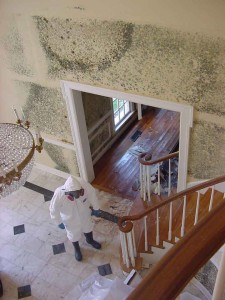 Do you constantly sneeze and cough? Does your head hurt for no reason? If so, you might have molds in your home. These fungi are far more damaging to human health than pesticides and heavy metals. Molds can produce toxins that cause severe lung infections, obstructive lung disease, cough, wheeze, headaches, and allergies. The dangers of mold exposure should not be overlooked.
Do you constantly sneeze and cough? Does your head hurt for no reason? If so, you might have molds in your home. These fungi are far more damaging to human health than pesticides and heavy metals. Molds can produce toxins that cause severe lung infections, obstructive lung disease, cough, wheeze, headaches, and allergies. The dangers of mold exposure should not be overlooked.
How Do Molds Affect People?
Exposure to molds is often the culprit behind asthma attacks, allergic reactions, itching eyes, and sneezing. These microorganisms develop in warm, humid environments, such as basements and shower stalls. They reproduce by making spores and can survive in dry conditions. Most houses and commercial buildings are contaminated with aspergillus, alternaria, or penicillium.
These common indoor molds have been linked to an increased risk of upper respiratory tract infections, breathing difficulties, sinus problems, tiredness, and dermatitis. In rare cases, they may cause Kashin-Beck disease, Usov’s disease, Reye’s syndrome, and even cancer. Mold is a silent killer that lives in your home. Severe reactions are rare but possible. Even if your house is neat and clean, it can still have molds around the windows, under the tables, or inside the ductwork.
Simple Ways to Prevent and Remove Mold
There are several things one can do to prevent and remove mold. The control of moisture is the most important step. Molds prefer humidity. By reducing moisture, you can prevent and kills these fungi. For the start, check your house for excess moisture or leak. Look for areas that may trigger mold growth, such as the walls, rugs, and furniture. Apply vinegar on these areas at least once a week to prevent mold growth. You may also use water and borax.
Watch for wet spots and condensation, especially during the rainy season. Use a dehumidifier to reduce the moisture level in the air. Indoor humidity should be below 55 percent. Make sure the heating, ventilation, and air-conditioning drip pans are clean and compact. Clean the freezer and refrigerator drip pans regularly. In case of water damage, dry the affected areas as quickly as possible. Cover cold water pipes and other cold surfaces with insulation. Keep your house properly ventilated year round.
If you already have mold in your home, assess the size of the affected area. Watch for hidden mold too. Decide whether you want to call a professional cleaning agency or fix the problem yourself. If you decide to do this yourself, wear protective clothing and rubber gloves. Turn off the heating and air conditioning system to keep spores from becoming airborne.
Use detergent and water to remove mold from hard surfaces. If the carpet or ceiling tiles have mold, you might need to throw them away. Do not use paint over moldy surfaces. After removing the mold, it’s important to prevent further re-growth. Dry the bath and shower daily, launder rugs at least twice a month, and clean food storage areas every week. Always use mold-resistant paint and repair any leaks in the roof, walls, and plumbing system. Vacuum and clean regularly to remove mold spores and prevent them from spreading around.
More about mold remediation at http://orange-restoration.com/services/san-diego-mold-removal/
 Chung Ling High School
Chung Ling High School